Part Two: Positions and Position Shifts
The Concept of Positions
The exercises and examples thus far did not go beyond this note on each string:
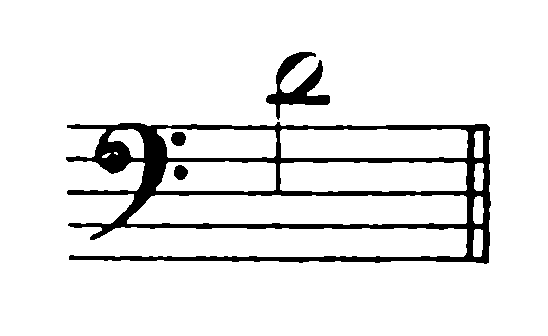
The range of pitches on each string was as follows:
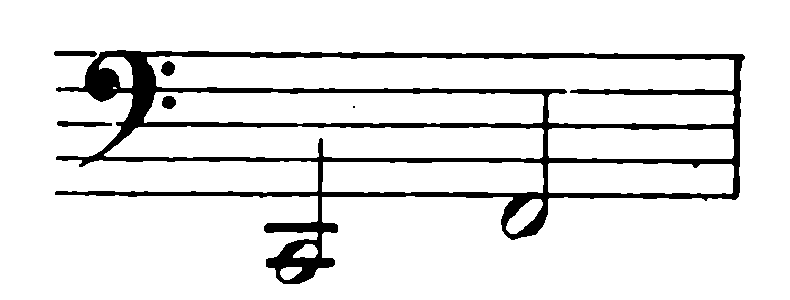
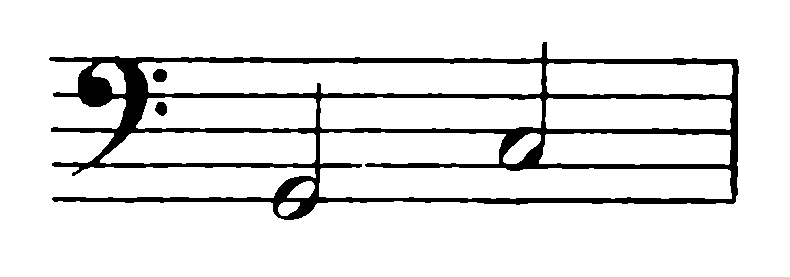
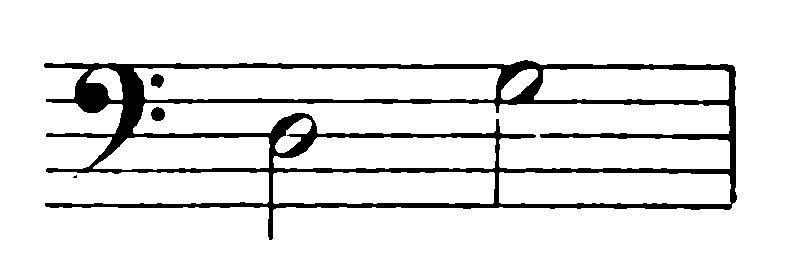
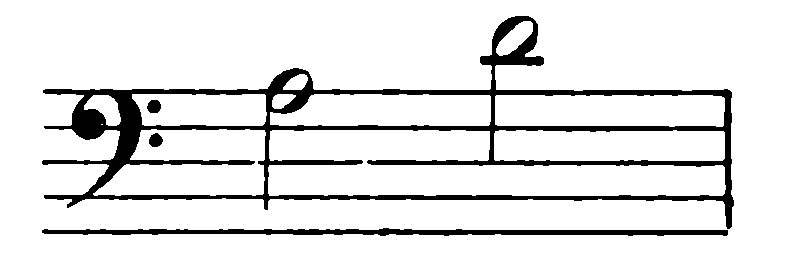
The range of the cello, as well as of the individual strings, is much larger. However, the fingers have to play higher1 on the string than they have done up until now, meaning that the hand must change its location on the fingerboard. These changes of location are called positions, and there are two types: 1) “Neck position,” where the thumb touches the neck of the cello, as before, and 2) “thumb position,” where the thumb touches the string as an independent finger. For now, we will focus on the first type, where the basic rule is that the thumb always maintains a place on the neck of the cello opposite the first and second fingers.
If we take the first finger from the lowest possible position (by the nut) on the A-string and keep moving up by a half step with the thumb opposing the finger, we get seven positions:
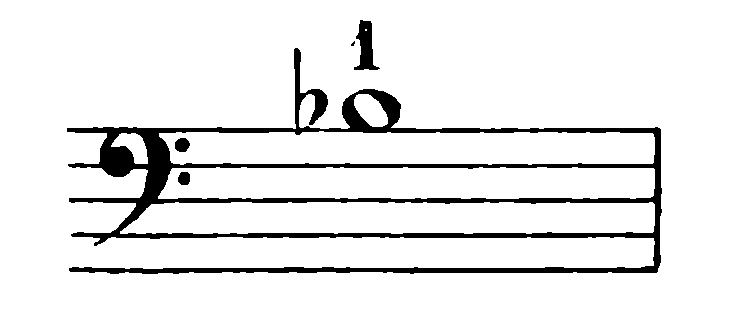






By the time you get to the seventh location, where the first finger touches an E on the A-string, the thumb has reached the limit of the neck position. If the first finger were to move further, for example to an F, the thumb could not move with it, as this would deviate from the rule that always determines the position of the thumb in relation to the first and second finger. We will discuss these deviations later.
The seven locations on the four strings, and their corresponding fingered pitches, are as follows:
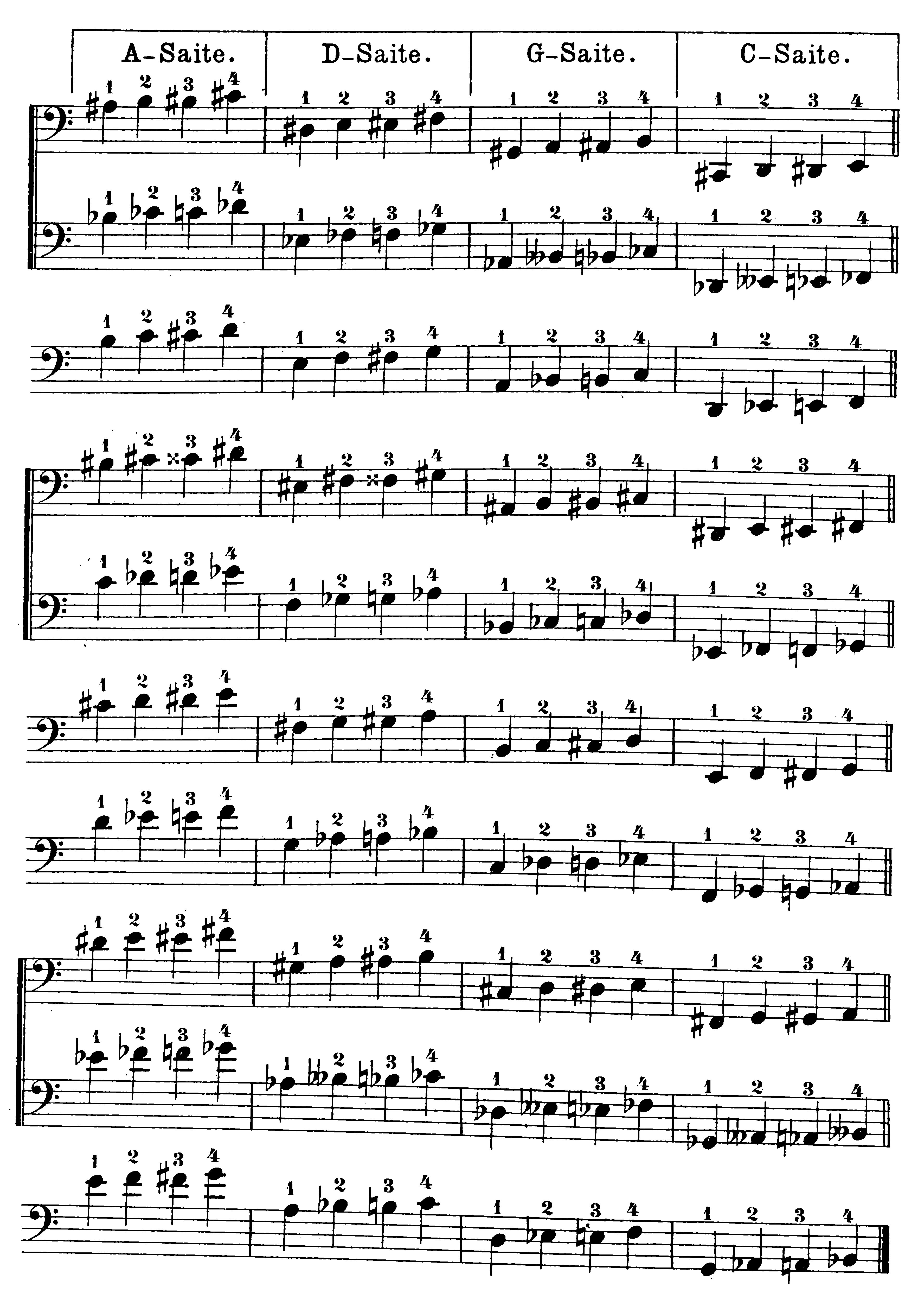
[A-Saite = A-string; D-Saite = D-string; G-Saite = G-string; C-Saite = C-string [“Position ½: enharmonisch, als erniedrigte Position I zu betrachten” = “Half position: pitches can respelled enharmonically. Regarded as a ‘low first position.’”] [“Position I: als erhöhte Position I zu betrachen” = “First position: regarded as ‘high first position.’”] [“Position I ½: enharmonisch, als erniedrigte Position II zu betrachen” = “1 ½ position: pitches can be respelled enharmonically; considered as a’“low second position.’”] [“Position II” = “Second position”] [Position III” = “Third position”] [“Position III ½: enharmonisch, also erniedrigte Position IV zu betrachten” = “3 ½ position: considered a “high third position,” or, if enharmonically respelled, a ‘low fourth position.’”] [“Position IV” = “Fourth position]”
In exercises in the various positions, we begin with fourth position. It is the easiest to find, as the thumb has a specific place at the lower end of the neck of the cello. The player needs to take into account from now on that the higher the position, the smaller the distance between the individual fingers. In very high positions, the spaces between the fingers become so small that one finger has to be placed on the other—one finger has to give way to the other in order to play the intervals perfectly in tune. In fourth position, the fingers sit freely alongside each other, but touch each other’s sides.
-
Davidoff’s note: “On the violoncello, ‘higher’ means the direction from the saddle to the bridge, i.e. the opposite direction; the higher is to be understood figuratively, because higher tones occur in the direction mentioned. ↩